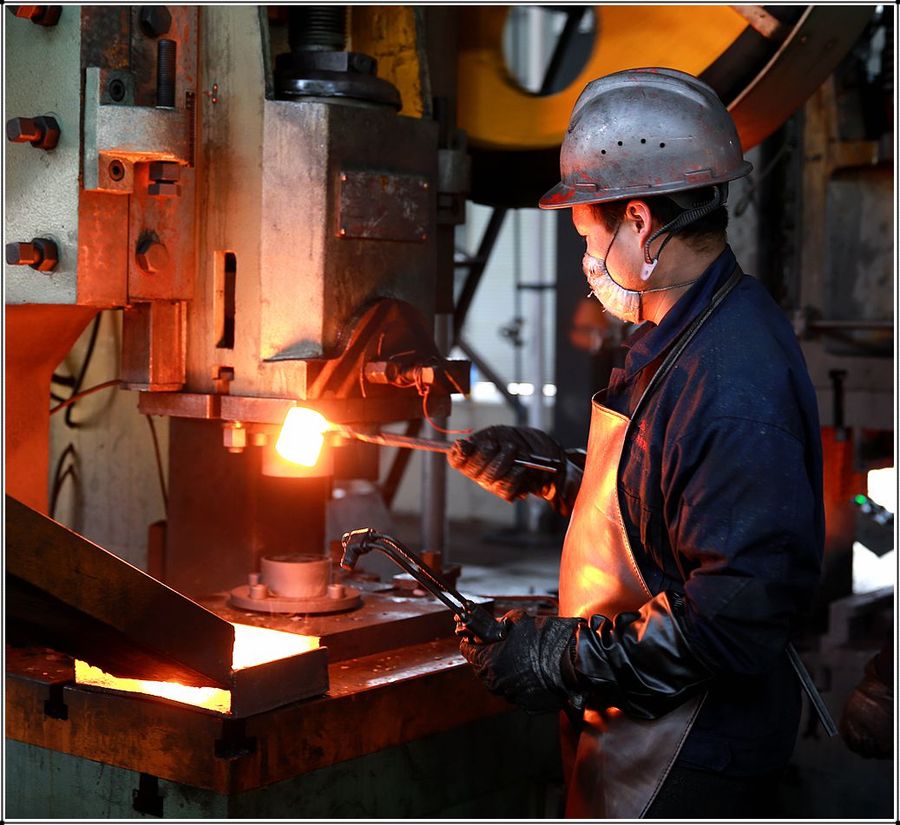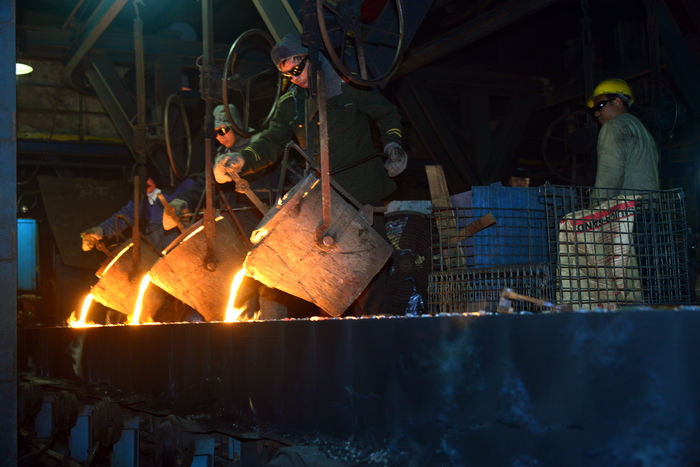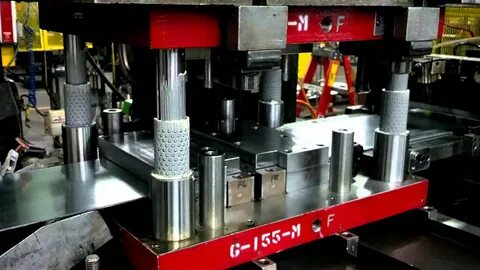difference between forging, stamping and casting
1、The difference between forging and casting
(1) casting: is to turn the metal liquid without shape into a solid with shape.
Casting is like you play with wax, you buy wax (scrap steel, or pig iron) and then turn this wax into liquid, into a mold of something, so that you get something of a different shape. (solid-liquid-solid)
Forging is like the process of making a pastry, where you knead a small dough, put it in a mold, and make different shapes of products. Almost like a solid at high temperature, the shape can become another shape (solid to solid).
The so-called casting is the process of casting molten metal into a model to obtain a casting. The casting specialty focuses on the metal melting process, and the control of the process during casting.
Forging is the plastic forming in the solid state, there are hot processing, cold processing, such as extrusion, drawing, pier rough, punching, etc. are forging.
(2) forging is slowly forming, casting is a molding
Casting: molten liquid metal filling the cavity cooling. The middle of the part is easy to produce pores.
Forging: mainly at high temperatures with the extrusion method molding. Can refine the grains in the parts.

2、The difference between free forging and die forging
Free forging is a processing method in which the heated metal billet is placed between the upper and lower main iron of the forging equipment, and impact or pressure is applied to directly deform the billet to obtain the required forgings. Because of the simple shape of forgings and flexible operation, it is suitable for the production of single pieces, small batches and heavy forgings. Free forging is divided into manual free forging and machine free forging. Manual free forging production efficiency is low, labor intensity, only for repair or simple, small, small batch of forgings production, in modern industrial production, machine forging has become the main method of forging production, in the heavy machinery manufacturing, it has a particularly important role.
Die forging, known as model forging, is the forging of heated billets placed in a dolly fixed to the die on the die forging equipment.
Die forging can be carried out on a variety of equipment. In industrial production, most of the hammer on the die forging using steam - air hammer, tonnage in 5KN ~ 300KN (0.5 ~ 30t). Presses on the die forging commonly used hot die forging presses, tonnage in 25000KN ~ 63000KN.
The forging die structure of die forging has single die hall forging die and multi-die chamber forging die. Single die hall forging die, it uses dovetail groove and bevel wedge to make the forging die fixed, to prevent the disengagement and left and right movement; with the key and key slot to make the forging die positioning accurate, and prevent the front and rear movement. The single die chamber is usually the final forging chamber, and the forging often requires air hammer to make the billet, and then the final forging chamber is hammered several times to form the billet at one time, and finally the forging is taken out to remove the flying edge.
The single die chamber forging and the multi-die chamber forging are two different types of forging dies, and their use occasions and performance characteristics are slightly different. Single die dollies are typically used for small quantities with high customization requirements to provide high precision, efficiency and quality forging of individual parts. In contrast, multi-mode dollies can forge multiple parts simultaneously, are suitable for high-volume, high-production tasks, and have the flexibility to change dies as needed to produce different types of parts. In addition, multi-mode forging dies can reduce costs and increase overall production efficiency. It is important to note that when choosing a single or multi-mode forging die method, different factors such as part geometry, process requirements, production cycle time and cost need to be taken into account based on the specific production needs.

3, casting, forging, stamping, casting the difference
(1) Casting is to melt the raw material and let it be naturally formed in the molding mold
Forging: the raw material is heated to a certain temperature and then forged with tools
Stamping: the raw material is stamped with a suitable stamping die
Die Casting: Based on casting, the molten raw material is injected into the mold by pressure to give it a higher density or more precise shape
Casting: The molten liquid metal fills the cavity and cools it. The middle of the part is prone to porosity.
(2) Forging: mainly at high temperatures with extrusion molding. Can refine the grains in the parts.
Part thickness is basically the same, suitable for forming with plate, with stamping.
Part thickness disparity, complex shape, not subject to heat, with die-casting.
1, casting is divided into two kinds: high-pressure casting and low-pressure casting. Simply put, is the melting of the metal, pressed into the model pressure is not the same, the temperature of the heated metal and the machine used to cast are not the same.
2, forging is also a way of casting, the difference is that the forging temperature is lower, some can be made in a semi-molten state of the metal into a finished way.
3, stamping is at room temperature, using machines such as presses to make semi-finished products into finished products.
4, die-casting is also a way of high temperature casting, when encountering a more complex structure, difficult casting, you can use the die-casting machine, the metal is heated into a liquid state, pressed into the mold, after cooling open the mold to take out the product of a casting method.







